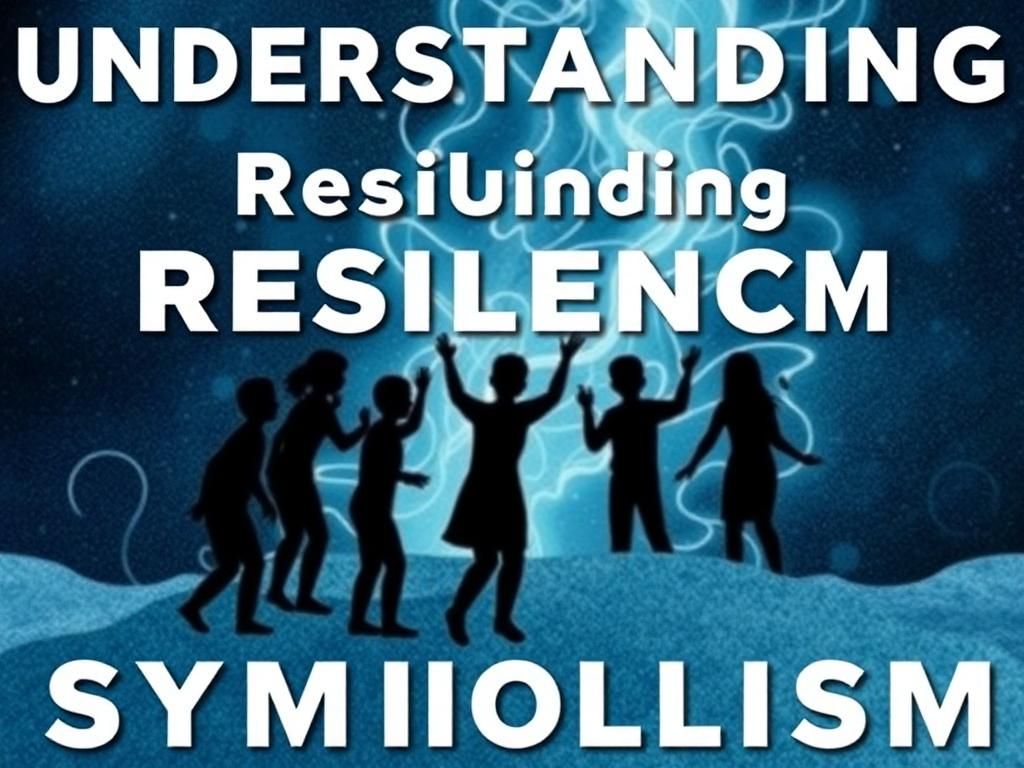In a world filled with challenges and uncertainties, the concept of resilience emerges as a vital trait, enabling individuals to navigate difficulties and emerge stronger. Resilience goes beyond mere survival; it encompasses the ability to adapt, recover, and grow in the face of adversity. Historically and across cultures, resilience has found expression in various symbols, each encapsulating the profound journey of overcoming obstacles. This robust symbolism helps convey complex ideas surrounding strength and endurance, serving as a source of inspiration and connection to shared human experiences.
Symbols carry a rich tradition of conveying nuanced meanings across different cultures and contexts. For instance, in psychological terms, resilience might be reflected through narratives in literature or imagery in visual arts. These symbols not only resonate on personal levels but also unify communities through shared understanding. In this article, we will delve deeper into the rich tapestry of resilience symbolism, exploring its historical roots, natural representations, modern adaptations, and psychological dimensions.
Historical Context of Resilience Symbols
Ancient Civilizations
From the inception of human civilization, resilience has been symbolically represented in profound ways. The ancient Egyptians revered the ankh, a symbol signifying life and eternity, which also embodies resilience over the inevitabilities of mortality. Likewise, in Greek mythology, the phoenix rising from its ashes serves as an enduring icon of rebirth and strength, illustrating how resilience can manifest through transformative experiences.
Indigenous Cultures
Various indigenous cultures have their own unique symbols reflecting resilience. *Totems*, for instance, often represent a community’s strength, courage, and perseverance. These animal symbols serve as cultural touchstones through which stories of survival and triumph are told. Additionally, the dreamcatcher in Native American culture symbolizes protection and resilience, capturing both the struggles and the hopes associated with life’s challenges.
Natural Symbols of Resilience
Flora and Fauna
Nature has its own language of resilience, often conveyed through specific flora and fauna. The lotus flower, which blooms beautifully even in muddy waters, represents purity and rebirth, mirroring personal journeys of overcoming hardships. Similarly, durable trees such as the oak symbolize strength and perseverance, their ability to withstand storms and harsh conditions serving as a powerful reminder of resilience.
Natural Phenomena
Elements of nature like the **rainbow** and the **butterfly** also embody resilience symbolism. The rainbow, often seen after a storm, stands as a sign of hope and new beginnings, while the butterfly conveys the notion of transformation and the beauty that often follows adversity. These natural phenomena remind us of the cycles of hardship followed by renewal.
Modern Symbols of Resilience
Artistic Representations
In contemporary culture, resilience is powerfully captured in artistic expressions. Literature, particularly the works of authors like Maya Angelou, emphasizes resilience through its storytelling. One can see this theme mirrored in visual art, such as the evocative paintings of Frida Kahlo, which portray her struggles yet radiate a sense of indomitable spirit. Such artistic representations serve as poignant reminders of individual journeys through adversity.
Social Movements

Resilience symbolism is prominently portrayed through various social movements. The raised fist is widely recognized as a symbol of empowerment and collective resistance against oppression. Additionally, colored ribbons, like the pink ribbon for breast cancer awareness, symbolize strength in adversity, fostering a sense of community and solidarity among those affected by illness and struggle.
Psychological Dimensions of Resilience Symbolism
Personal Meanings of Symbols
Individuals often attribute personal meanings to resilience symbols, reflecting their experiences and emotions. The specific symbol may resonate differently based on the context of one’s life, highlighting how personal narratives shape our interpretations. These symbols can act as anchors, reminding individuals of their capacity for resilience in times of hardship.
Therapeutic Use of Symbols
In therapeutic settings, symbols play a significant role in healing processes. Art therapy often utilizes resilience symbols to facilitate emotional expression and connection to one’s experiences. Rituals, involving symbolic acts such as lighting candles or creating visual art, can reinforce resilience, offering individuals tangible ways to acknowledge and navigate their journeys.
Resilience Symbols in Modern Society
Popular Culture
Popular culture also reflects themes of resilience through film and music. Movies like “The Pursuit of Happyness” showcase personal struggles and triumphs, underlying the importance of perseverance. Similarly, lyrics in empowering songs, such as “Fight Song,” resonate deeply, emphasizing the message of resilience through strength and determination.
Social Media Influence
In the digital age, social media platforms have become powerful channels for promoting resilience. Hashtags and memes associated with resilience, such as #Resilience and #KeepGoing, foster community support and encourage shared narratives. These platforms not only highlight personal stories of resilience but also emphasize collective strength and encouragement.
Challenges and Critiques of Resilience Symbolism
Over-Simplification of Resilience
While resilience symbolism can be powerful, there is a danger in oversimplifying complex human experiences. Reducing profound struggles to mere symbols can undermine the depth of these experiences. Furthermore, the trend of ‘toxic positivity’ threatens to diminish authentic feelings associated with hardship by promoting an overly simplistic view of resilience, suggesting that one should always ‘stay positive’ despite difficult realities.
Cultural Appropriation

The use of resilience symbols also raises critical discussions around cultural appropriation. Misrepresentation or commodification of cultural symbols can lead to a lack of understanding and respect for their origins. To honor resilience effectively, it is essential to approach these symbols with awareness of their context and meaning within their original cultures.
Conclusion: The Ongoing Importance of Resilience Symbols
In exploring resilience symbolism, we recognize their profound role in promoting understanding and connection among individuals and communities. These symbols resonate with shared human experiences, reinforcing the idea that resilience can manifest in many forms. As we navigate a world filled with challenges, creating and embracing personal symbols of resilience can foster deeper connections with ourselves and others.
Future Directions
As society evolves, new resilience symbols will undoubtedly emerge, reflecting contemporary struggles and triumphs. Embracing the potential for new meanings and exploring personal relationships with these symbols will allow individuals to honor their journeys and create more profound connections to the concept of resilience.
| Symbol | Culture/Context | Meaning | Example |
|---|---|---|---|
| Ankh | Ancient Egyptian | Life and eternity | Found in tombs, symbolizing eternal life |
| Phoenix | Greek Mythology | Rebirth and transformation | Represented in art and literature |
| Dreamcatcher | Indigenous American | Protection and resilience | Used to filter out negative dreams |
| Lotus Flower | Various cultures | Purity and rebirth | Common in Eastern philosophies |
| Raised Fist | Social Movements | Empowerment and resistance | Popular in protests for change |
FAQs about Resilience Symbolism
What is resilience symbolism?
Resilience symbolism refers to various symbols and images that convey the concept of resilience, illustrating strength, endurance, and recovery in the face of adversity.
Why are symbols important in understanding resilience?
Symbols help convey complex ideas about resilience effectively, allowing for shared understanding and community connection.
What are some examples of resilience symbols?
Examples include the ankh from Egyptian culture, the phoenix from Greek mythology, the lotus flower, and social symbols like the raised fist and colored ribbons.
How can resilience symbols be used in therapy?
In therapy, symbolism can help patients express emotions, navigate their experiences, and reinforce their understanding of resilience through art and rituals.
What challenges exist in using resilience symbols?
Challenges include the risk of oversimplifying complex human experiences and concerns around cultural appropriation and misrepresentation.
How does popular culture reflect resilience symbolism?
Popular culture reflects resilience through movies, music, and art that highlight personal struggles, triumphs, and the importance of perseverance.
Can resilience symbols have personal meanings?
Yes, individuals can interpret resilience symbols based on their experiences, attributing unique significance and personal narratives to them.
How can one create their own resilience symbols?
Creating personal resilience symbols can involve reflecting on individual experiences, identifying elements that resonate, and finding ways to express those meanings through art, writing, or rituals.
What is toxic positivity in relation to resilience narratives?
Toxic positivity refers to the oversimplification of resilience, promoting a ‘stay positive’ mentality that undermines authentic feelings and complex responses to adversity.
How can social media contribute to resilience symbolism?
Social media amplifies resilience narratives through hashtags, shared stories, and community support, promoting collective experiences and encouragement among individuals.
